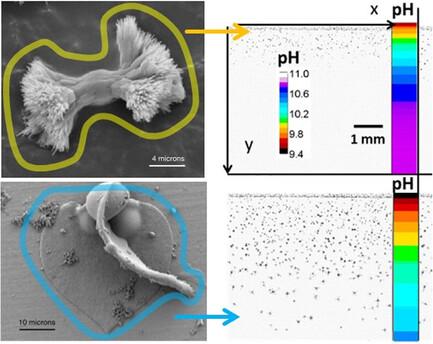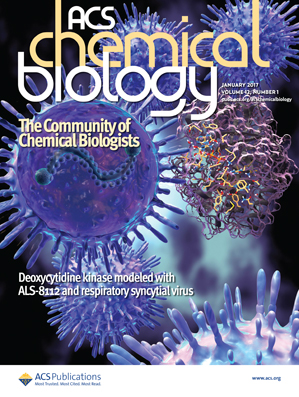二氧化硅和白垩纳米晶自组织生物形态对 pH 值的形态敏感性
IF 3.8
2区 生物学
Q2 BIOCHEMISTRY & MOLECULAR BIOLOGY
引用次数: 0
摘要
碱土碳酸盐和聚合二氧化硅通过化学耦合产生的无机-无机自组织复合结构,是开发创新型多功能材料的有机混合生物仿生系统的理想替代品。尽管人们普遍承认 pH 值在生成这些让人联想到原始生物体(因此被称为生物形态)的结构方面具有重要作用,但人们通常根据起始 pH 值来研究 pH 值的影响。这种方法无意中忽略了与生物形态成核和生长相关的重要时空 pH 梯度。要深入了解 pH 值对形态发生的作用,就必须能够利用非侵入式技术实时检测局部 pH 值,并将 pH 值与生物形态生长的不同阶段相关联。这一目标可通过结合光学和荧光成像技术来实现。在典型的反扩散实验中,使用了精确选择的 pH 探针,该探针适合在硅胶中进行 pH 比重测量。实验结果与通过反扩散实验合成生物形态的计算机模拟结果进行了比较。结果表明存在两种主要的形态发生机制。有趣的是,控制生物形态复杂塑造的形态发生过程与二氧化硅的种类无关。本文章由计算机程序翻译,如有差异,请以英文原文为准。

Morphological Sensitivity to pH of Silica and Chalk Nanocrystalline Self‐Organized Biomorphs
Inorganic–inorganic self‐organized composite architectures resulting from the chemical coupling of alkaline‐earth carbonate and polymeric silica are a promising alternative to organic‐based hybrid bio‐mimetic systems for developing innovative multi‐functional materials. Although the importance of pH in the generation of these structures reminiscent of primitive living organisms (and for this called biomorphs) is widely acknowledged, the effect of pH is generally investigated on the basis of starting pH value. This approach inadvertently neglects the important spatial and temporal pH gradients associated with biomorph nucleation and growth. A deep understanding of the role of pH on morphogenesis requires the ability to detect locally the pH in real‐time with a non‐invasive technique and correlate pH to the different stages of biomorphic growth. This aim is achieved by combining optical and fluorescence imaging. An accurately selected pH probe suitable for ratiometric pH measurement in the silica gel is exploited during a typical counter‐diffusion experiment. The results are compared with computer simulation of the synthesis of biomorphs by counter‐diffusion experiments. The results demonstrate the existence of two main morphogenetic regimes. Interestingly, the morphogenetic process controlling the complex shaping of biomorphs results to be independent of the silica speciation.
求助全文
通过发布文献求助,成功后即可免费获取论文全文。
去求助
来源期刊

ACS Chemical Biology
生物-生化与分子生物学
CiteScore
7.50
自引率
5.00%
发文量
353
审稿时长
3.3 months
期刊介绍:
ACS Chemical Biology provides an international forum for the rapid communication of research that broadly embraces the interface between chemistry and biology.
The journal also serves as a forum to facilitate the communication between biologists and chemists that will translate into new research opportunities and discoveries. Results will be published in which molecular reasoning has been used to probe questions through in vitro investigations, cell biological methods, or organismic studies.
We welcome mechanistic studies on proteins, nucleic acids, sugars, lipids, and nonbiological polymers. The journal serves a large scientific community, exploring cellular function from both chemical and biological perspectives. It is understood that submitted work is based upon original results and has not been published previously.
 求助内容:
求助内容: 应助结果提醒方式:
应助结果提醒方式:


